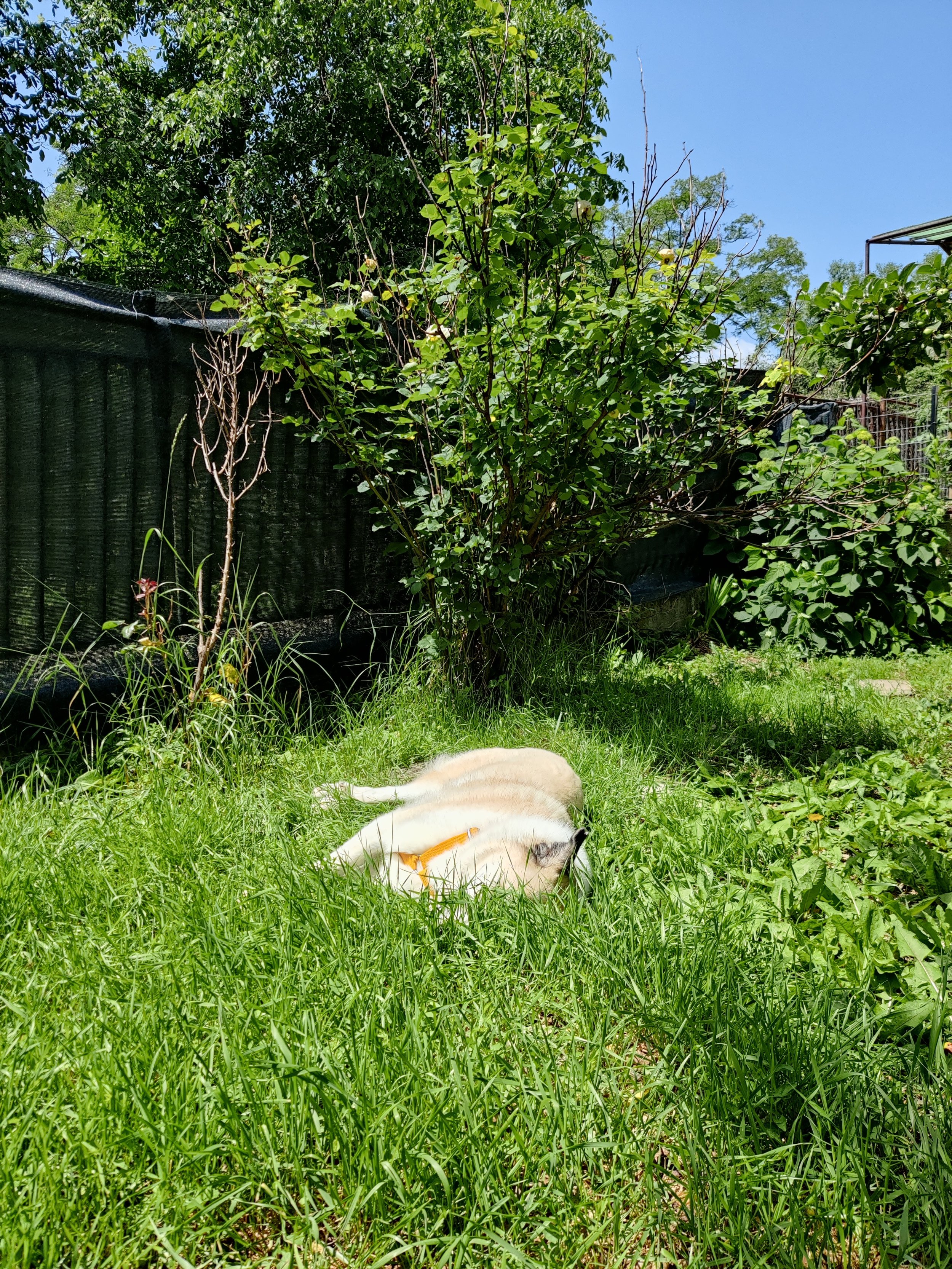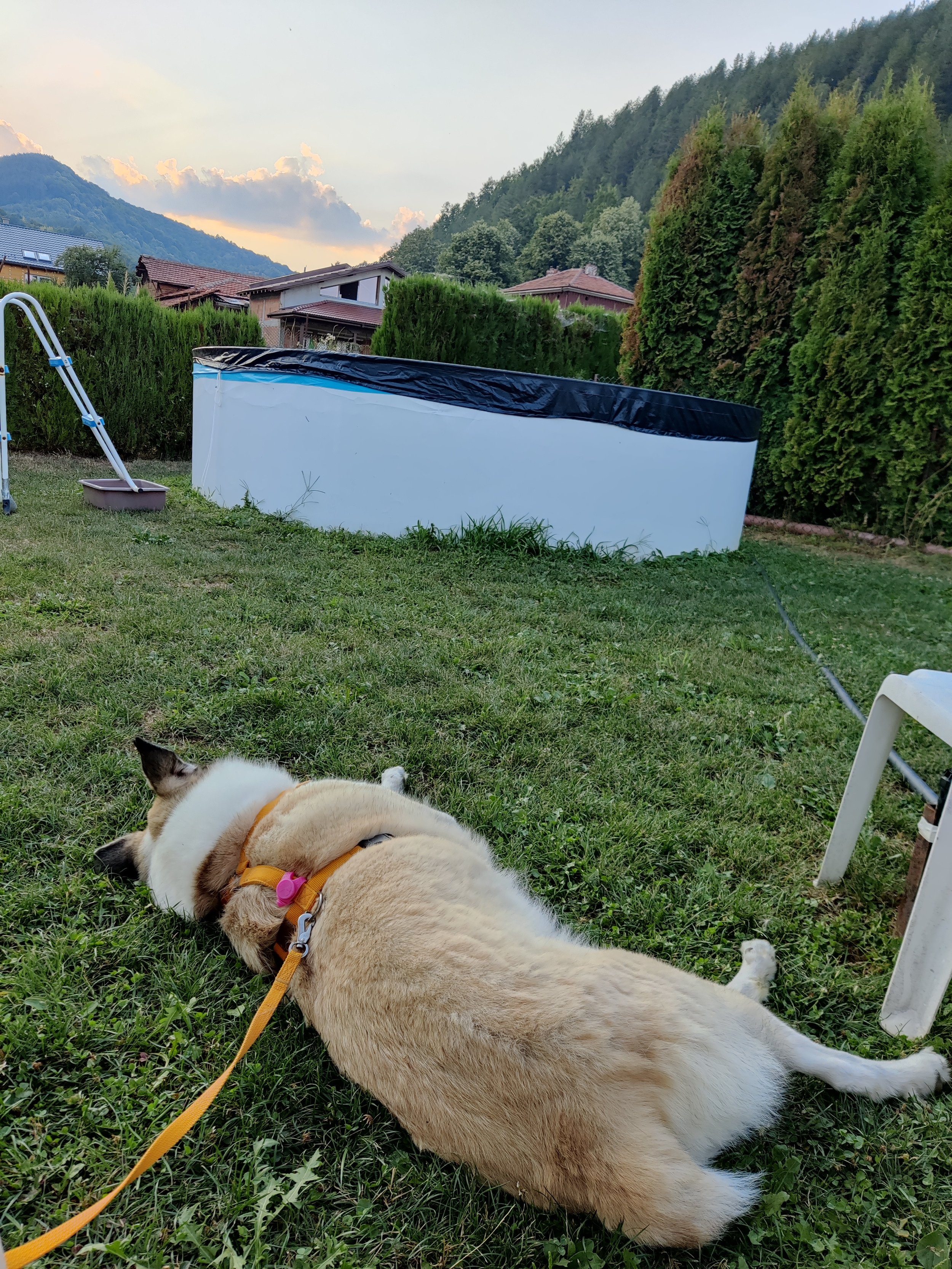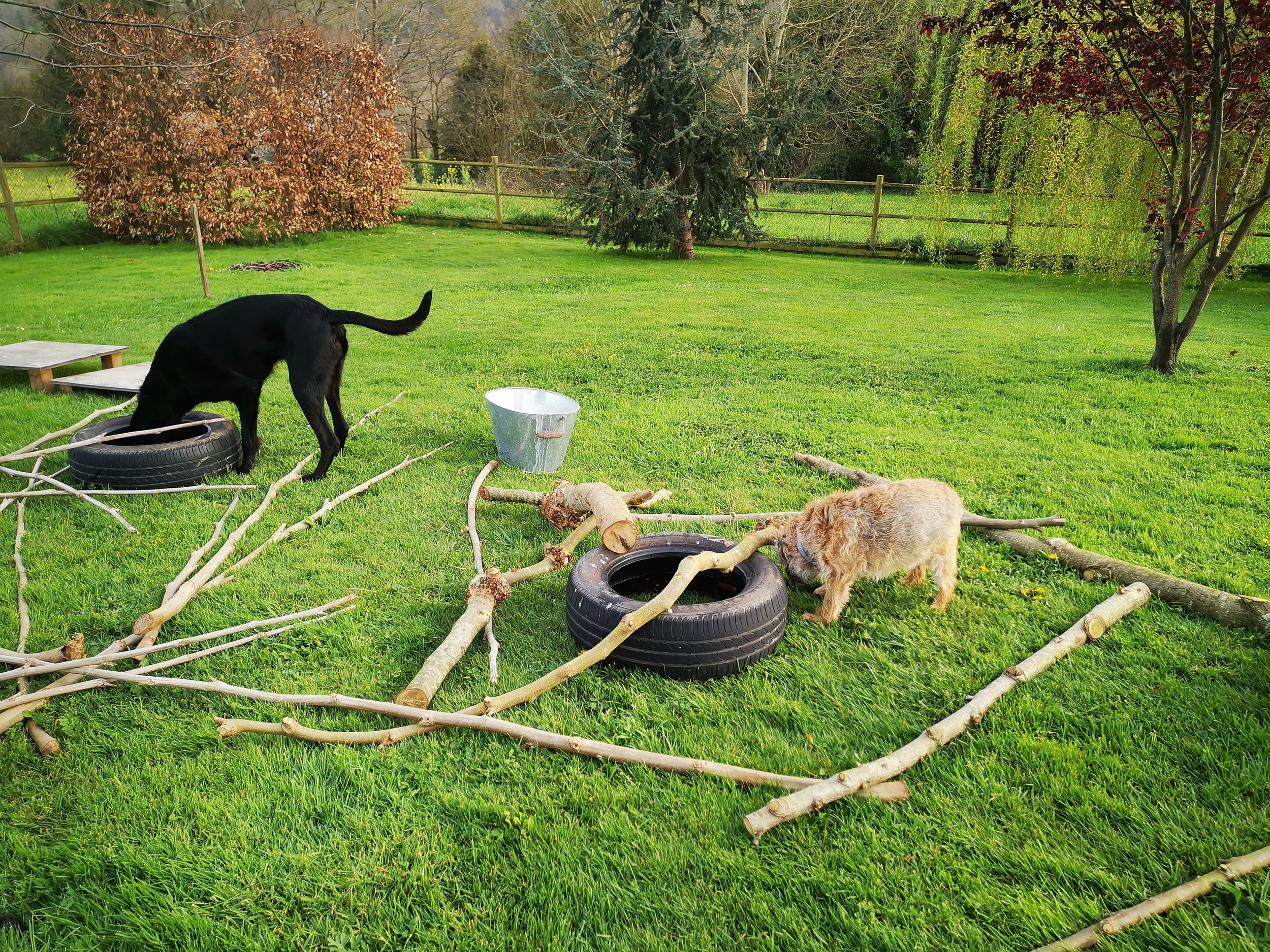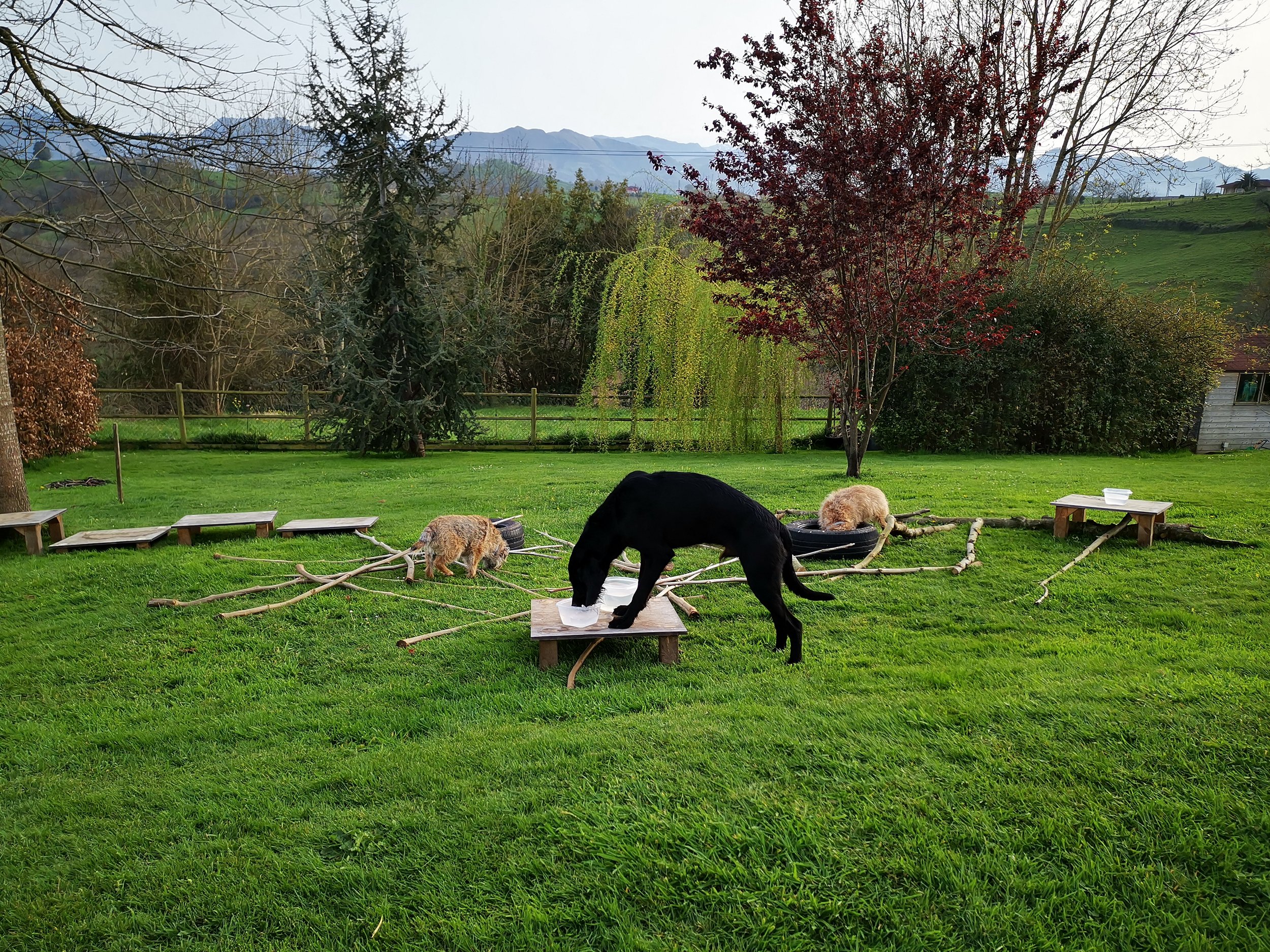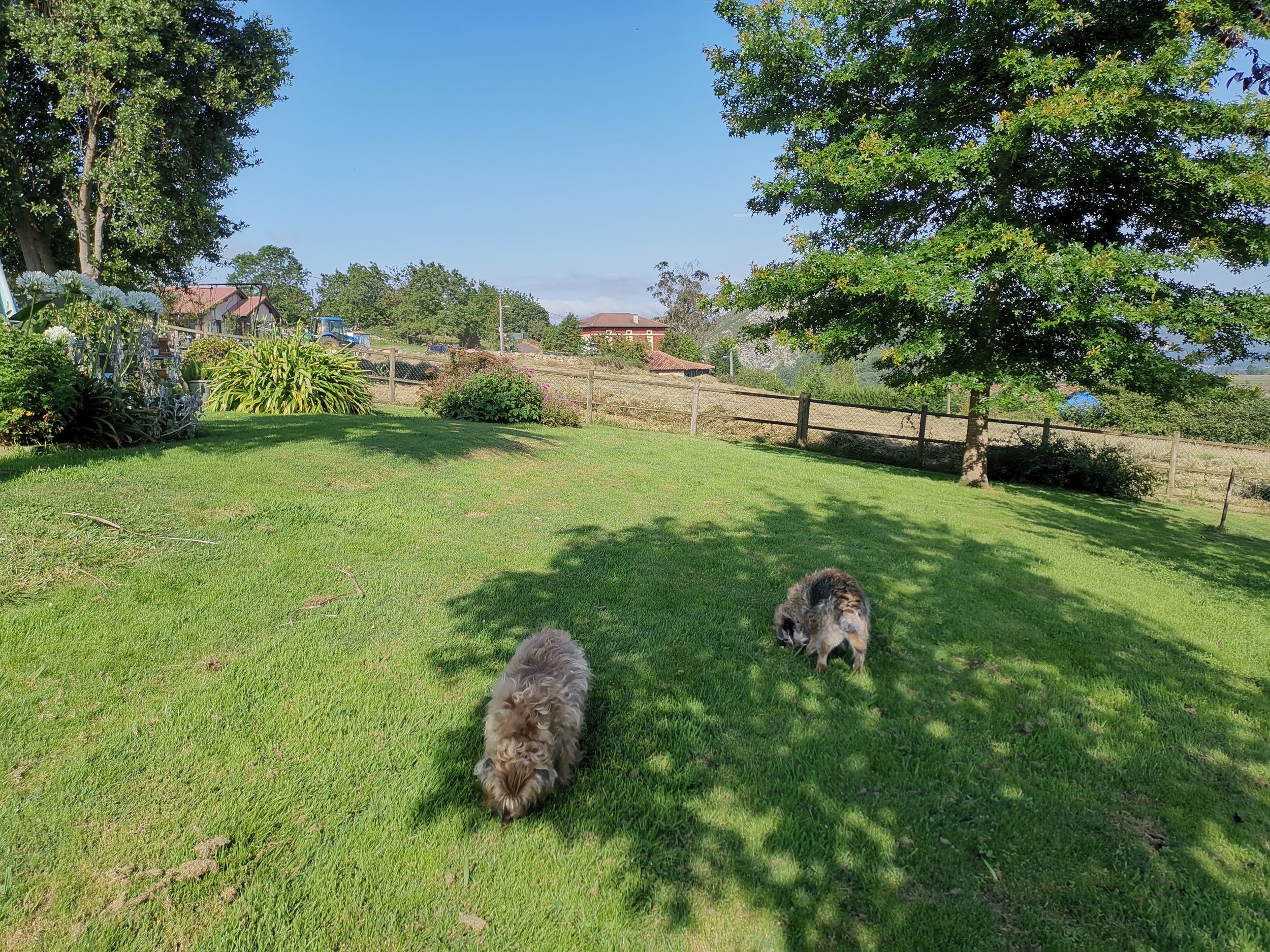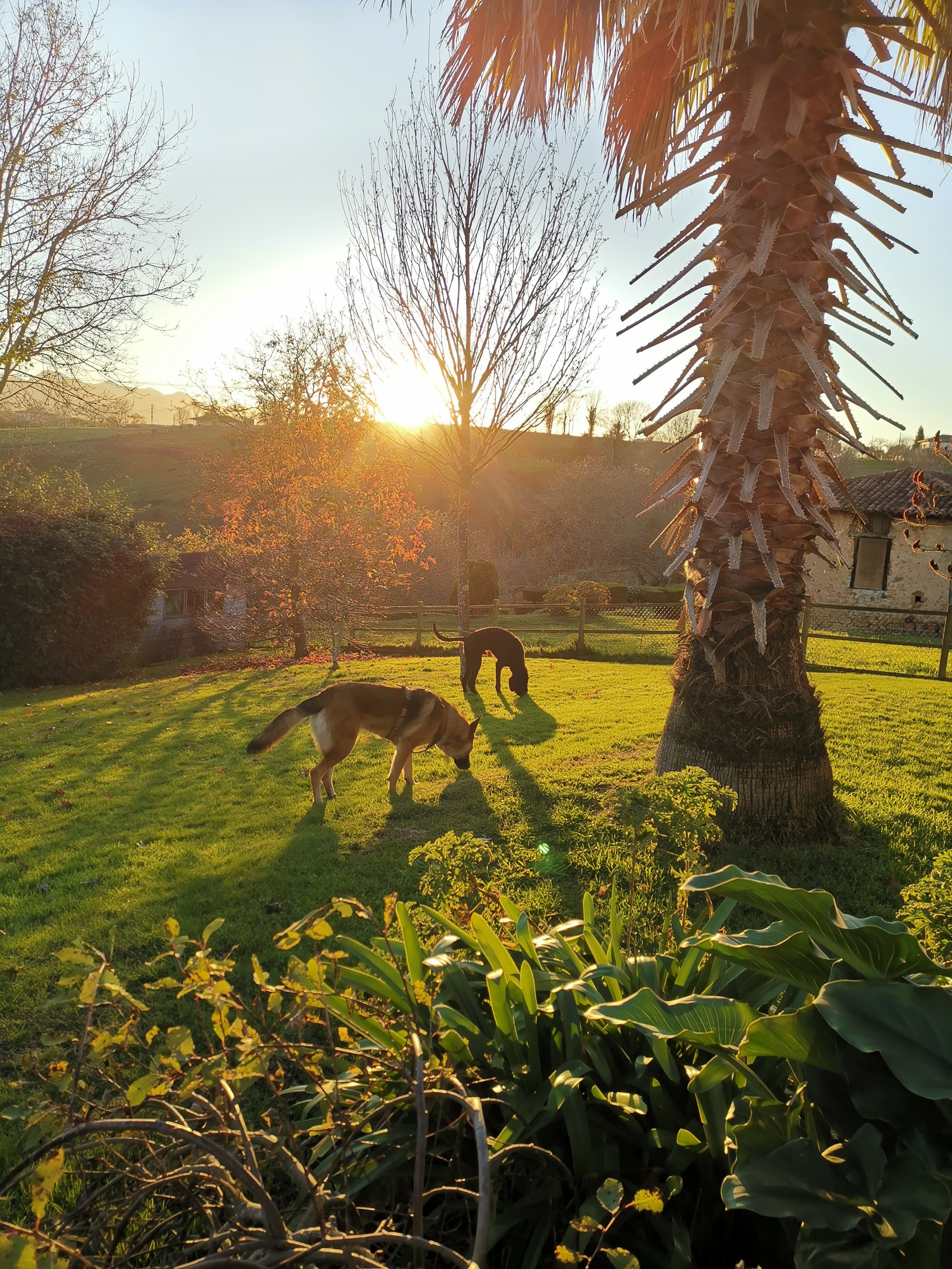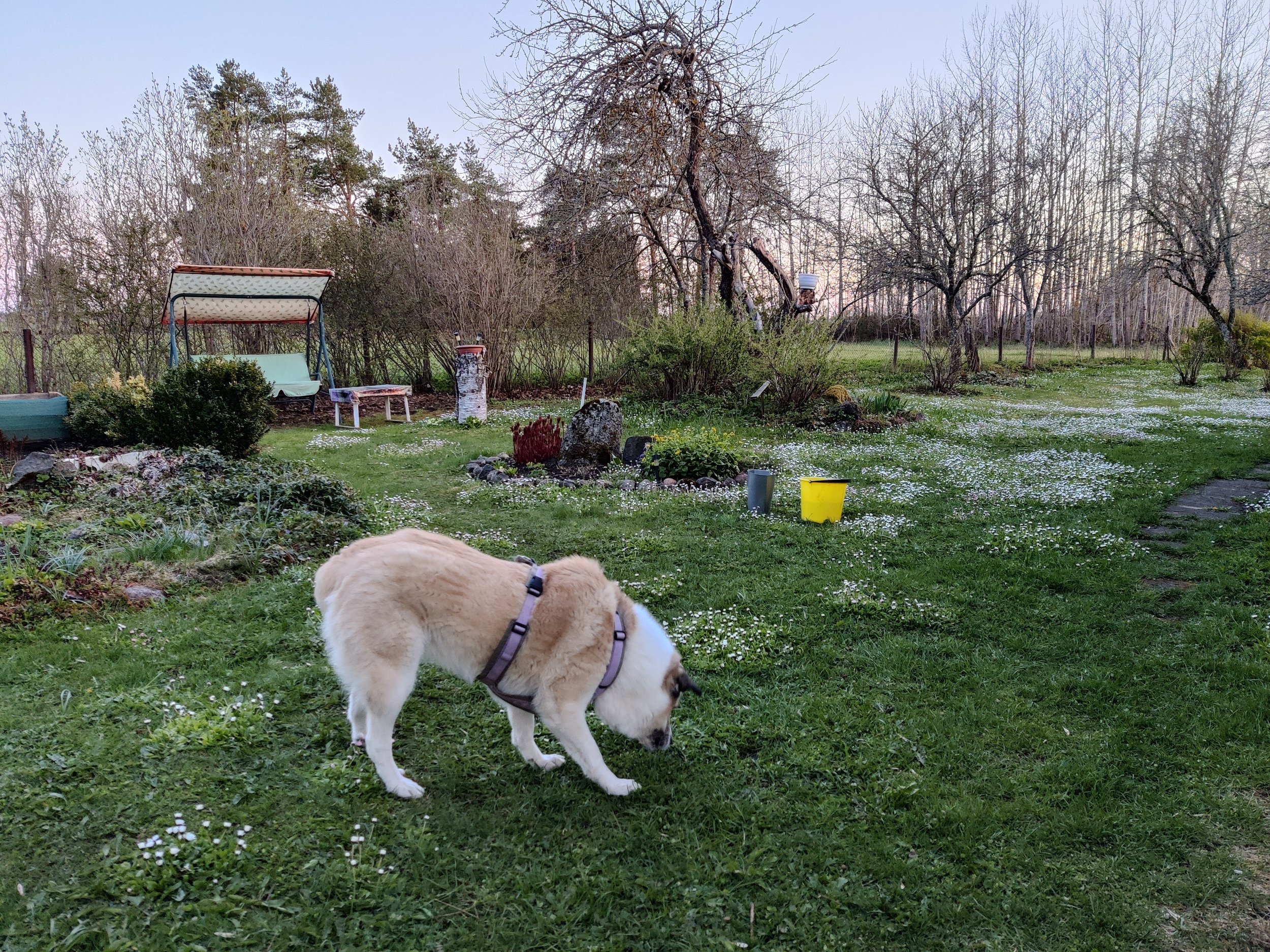Garden much?
Having a private garden is certainly a luxury many of us dream of. And how lucky are the dogs who can use the garden at their pleasure? Having the opportunity to move freely, enjoy nature and have more control over when they go to the toilet is absolutely wonderful for dogs.
But then, why do we frequently get questions like: “my dog is barking all the time / my dog is over aroused / my dog digs huge holes in the garden” and description of other behaviours likely connected to higher stress levels? In fact, there is more to it than just leaving the door open and letting your dog out. Let’s dig into it!
Why do behaviour problems arise in the garden?
Note: Like with any behaviour problems, there may be several underlying factors, for example: health issues / pain / unmet basic needs, so we need to make sure the dog is healthy, sleeping, eating well and has other needs met as per her ethogram. In this article we will look only at what happens in the context of the garden.
Many dogs absolutely enjoy the garden, but can quickly get bored. Even if they go on interesting walks every day, in the garden there are always the same plants, the same ground, the same place every day. Out of boredom they can start digging, chasing birds, chewing on your garden furniture, etc.
And outside there is a whole interesting world: there are all the exciting moving things (people, dogs, cars, bicycles, cats and other animals). These moving things also make noises! Some dogs would like to get to them, but cannot due to the fence, so they get frustrated.
Other dogs bark to scare these moving things away - either because the dogs feel scared or that they feel the need to guard the property.
Then comes the contextual learning: if a dog regularly gets frustrated / bored / stressed in the garden and practises the behaviours associated with higher stress levels (excessive barking, digging, chewing, chasing, etc), being in the garden itself will already trigger these feelings and behaviours. Many of us can relate if we imagine simply walking into a dentist's office. Nothing unpleasant has happened yet, but we may already feel uneasy just being there.
If you feel your dog should be enjoying their time in the garden and they are not, you are not alone. And you can definitely do something about it!
What can we do about it?
In this section we will offer several ideas to help your dog feel more relaxed in the garden. Depending on the situation and your dog, you might choose to try one or several of these!
If you are dealing with a behaviour that has been happening for a while already and is well established, we first need to find a way to prevent the dog from practising this behaviour. We all know - practice makes permanent!
During this phase a few management solutions can be useful:
If your fence is see-through, you can cover the view using special garden fence view blockers.
Block access to most problematic areas, leaving access only to the most quiet corners of the garden.
Reduce the time your dog spends in the garden, go inside before the dog feels aroused / opt for short walks instead.
If needed, use a long leash in the garden.
Do not leave your dog alone in the garden. This tip is even more important for dogs of guarding breeds - they will always take responsibility for guarding if left alone. We can use a simple hand signal to let them know we are taking care of the situation. Learn more about the hand signal in this Nordic Dog Trainer blog.
1 - Heidi relaxing in the garden thanks to the view blocker 2 - On-leash relaxation also counts 3 - Rufus is not alone in the garden
The management solutions might be necessary for a few weeks or more (some are great to keep forever). The brain of your dog needs to re-learn that being in the garden is about being calm and relaxed, and it takes time!
In the meantime, we can also introduce calming activities and practise them regularly to help reshape the way your dog feels and behaves in the garden.
Activity 1. Treat searches - we love this simple and wonderful activity. We even dedicated a separate article to treat searches, to tell you why, when and how to do it. Read the article here.
Activity 2. Enriched environment
Another simple and great activity for your dog, where they can use their noses, brain and bodies in a calm way. And all those objects you never use can finally be useful!
Bring out all kinds of things (safe to your dog): boxes, umbrellas, carpets, chairs, watering cans, old shoes and clothes, etc. Simply place a few objects for your dog to explore freely: as much and the way they want, no commands necessary. Get creative and change it up every time!
Activity 3. Other sniffing games
Using their noses and brains requires a lot of focus from dogs, calms them down and provides a sense of achievement. There are endless sniffing games we can play with our dogs, here are just a few ideas:
Teddy search: ask your dog to find their favourite toy.
Pâté tree: spread a bit of pâté on trees in your garden and ask the dog to find them.
Scent discrimination: teach your dog to find a particular smell and tell it apart from other smells. For example: a bag of camomile tea amongst other kinds of tea.
These games are incredibly fun for us, too: seeing your dog using their super-power of sniffing never gets boring! We recommend getting the book by Anne Lill Kvam “A Dog's Fabulous Sense of Smell: Step by Step Treat Search Tracking” for training steps and more ideas.
Of course, practising calming activities also means it’s best to avoid arousing activities such as fetch / ball chasing / tag games. We want the right kind of chemistry in our dog’s brain!
As you can see, being calm in the garden is a skill and a behaviour we can help our dogs gain by introducing some management solutions and calming activities. As our teacher Dr Amber Batson says: “The quality of our effort is the quality of their lives”.
Enjoy beautiful photos showing calming activities below:

